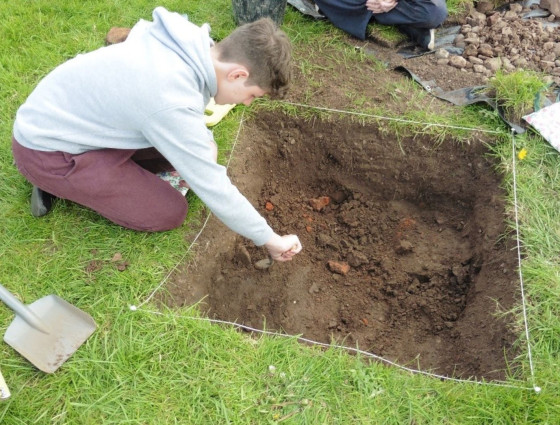Nearly 100 people took part in an archaeological dig in Wichenford this weekend hosted by Worcestershire Archive & Archaeology Service and the county’s archaeological society.
92 people were on site, including members of the Worcestershire Young Archaeologists’ Club (WYAC) and North Worcestershire Archaeology Group (NWAG).
As part of the dig, 20 ‘test pits’ were excavated across the scattered settlement of Wichenford, in order to answer questions about the village's origins and development over time.
Wichenford, just north of Worcester, is one of six medieval settlements being explored as part of a community archaeology project which is being held across the county called Small Pits, Big Ideas.
Findings are still becoming clear but so far two eighteenth century counterfeit coins have been found, along with a clay pipe containing a maker’s mark and lots of pottery from the seventeenth century onwards.
Heather Rendall, Chair of the Wichenford Local Heritage Group, who co-organised Wichenford’s Big Dig said:
“What we are hoping, when all the many, many finds have been washed, sorted and analysed, is to find items that we can specifically place to a particular moment in that recorded history, maybe even to a certain name. This is looking likely as two coins from the Georgian era were found on adjacent sites, both of which were farmed by Thomas Bennet (George II) or William Best (George III). Once the dates are read from the coins, we will know who lost them!
The parish’s recorded history dates from the eighth century and, because it was fortunately owned by the Bishop of Worcester, there are abundant records in the county’s archives held at The Hive.
Early results are varied. Some pits produced masses of mixed items from twenty-first century objects to eighteenth century slipware pottery all in a single layer, while other test pits were surprisingly shallow. We still have to process the lower layers which will or should contain earlier material, however one site has excelled in already producing a thirteenth to fourteenth century piece of pottery which may go to proving that this particular site was inhabited for well over 600 years.”
Keep an eye on Explore The Past’s social media channels for updates as the story continues to unravel.
The results of all six excavations will be shared in a combined exhibition, which will tour Worcester, Kidderminster and Redditch in early 2023.

 Facebook
Facebook Twitter
Twitter Email
Email WhatsApp
WhatsApp Messenger
Messenger